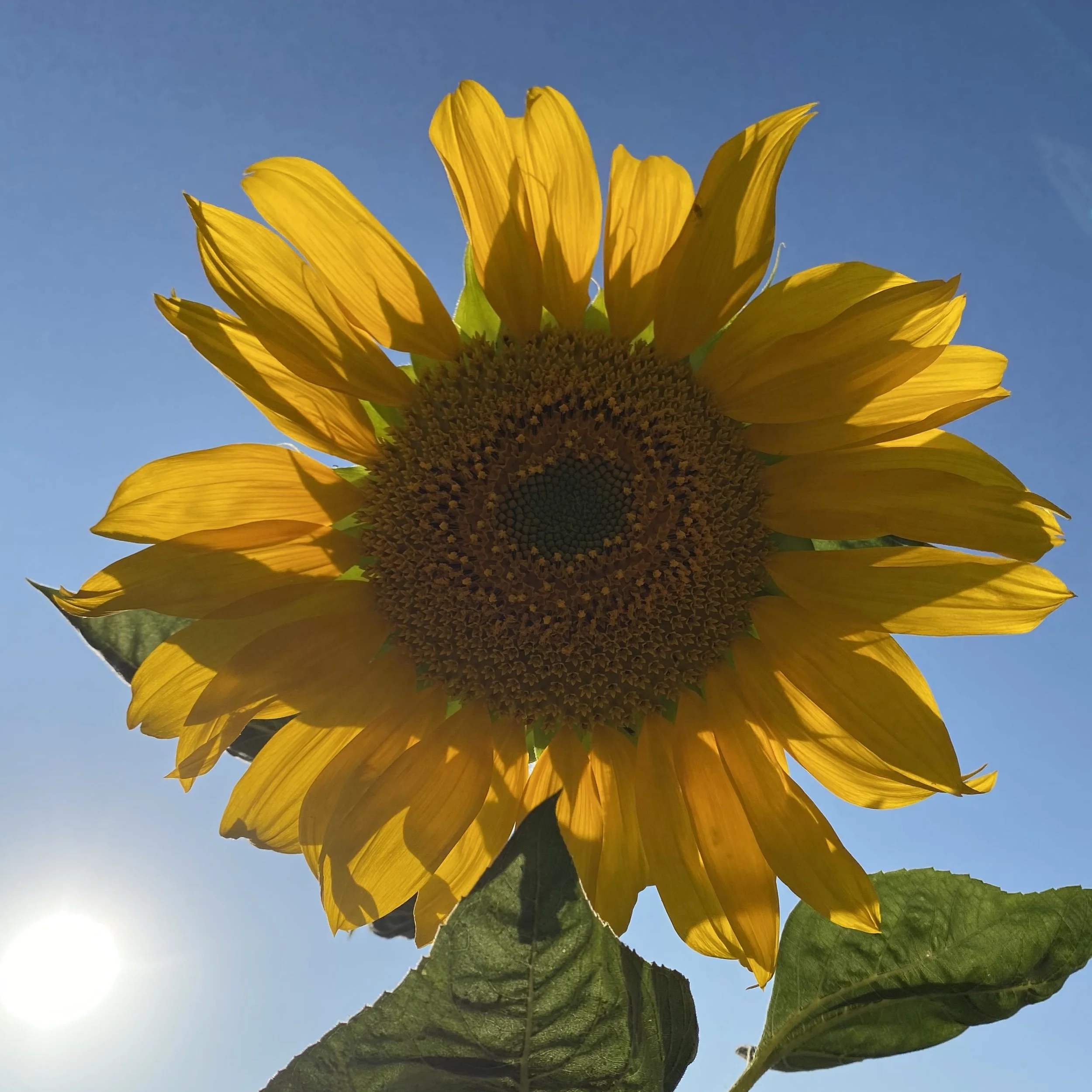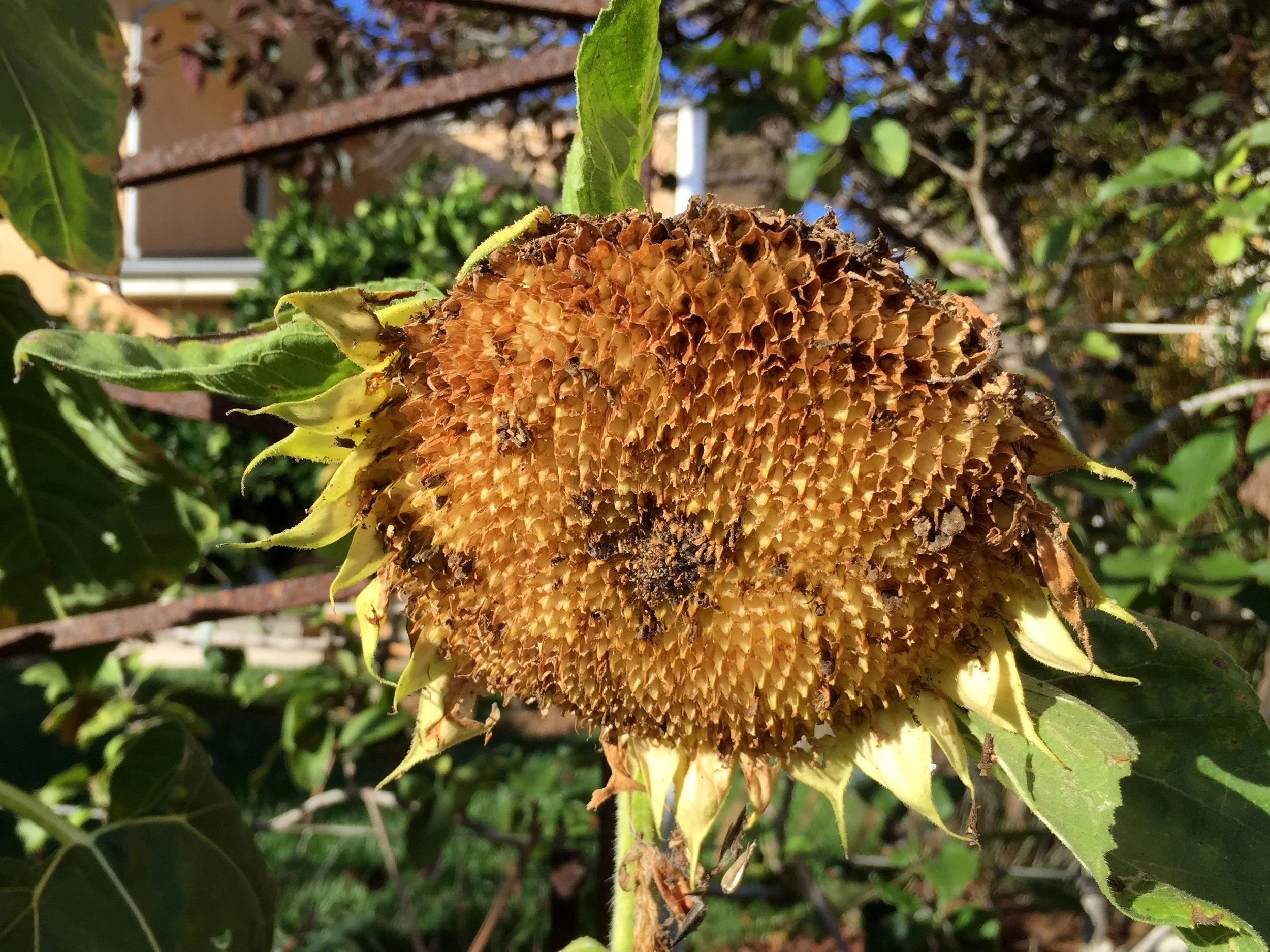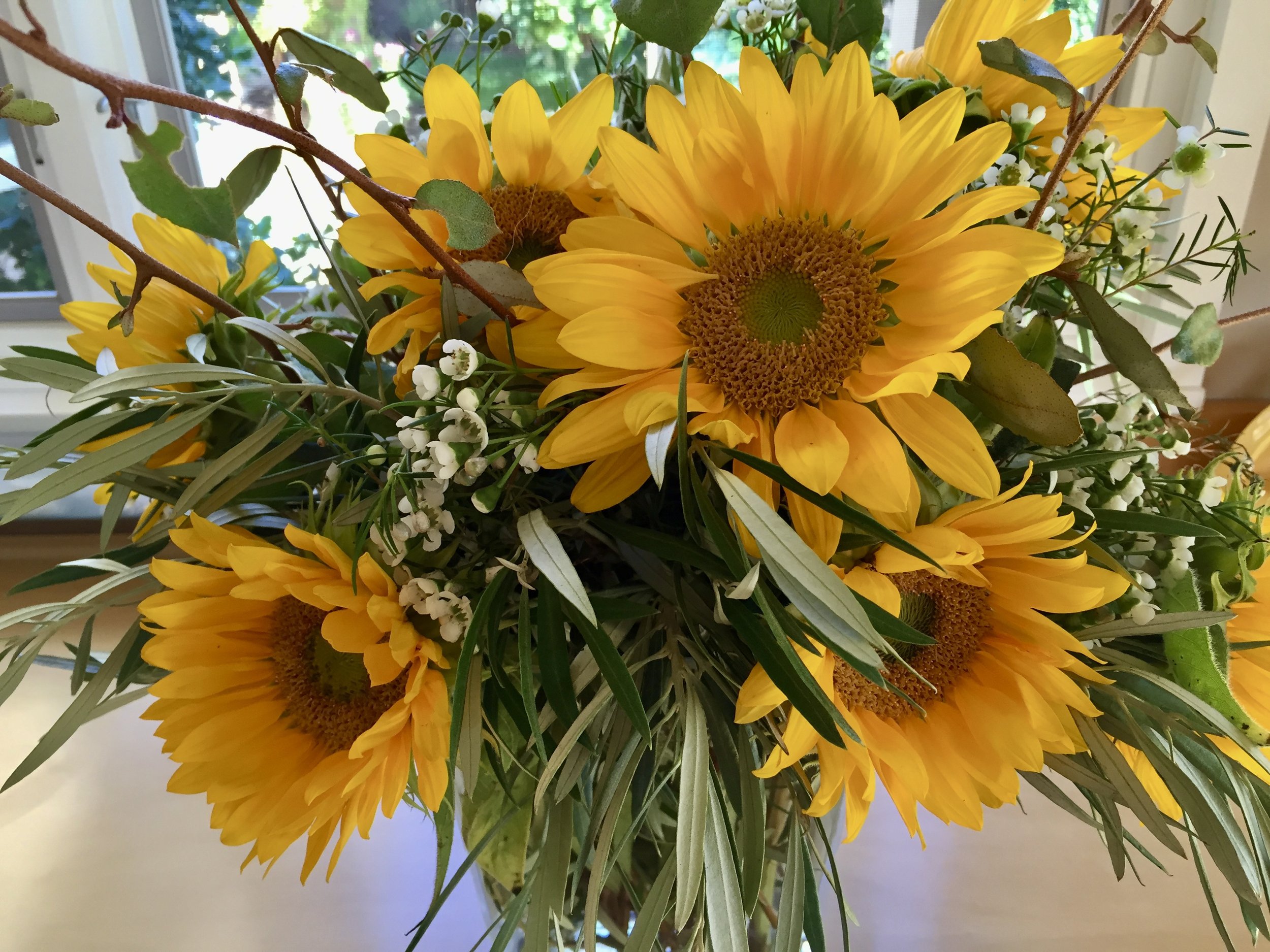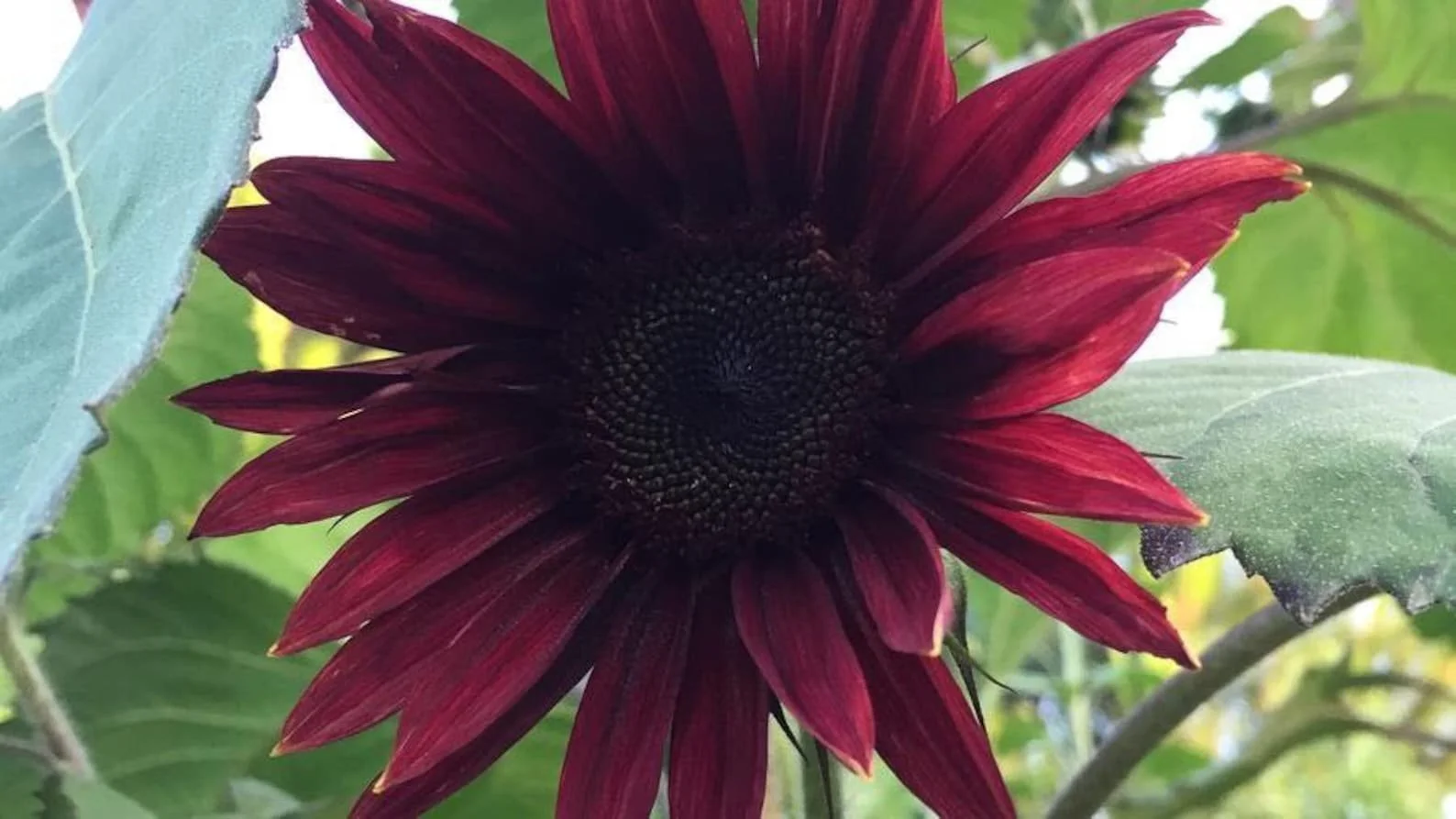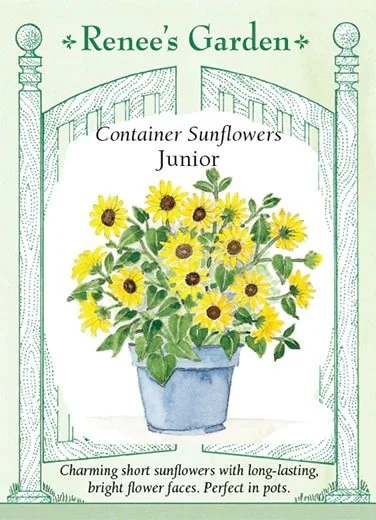Six Reasons to Plant Sunflowers
I just planted sunflowers seeds in a six-pack for later transplant to the garden. Last year I grew them next to my zucchini plants with good success.
My thought was to attract bees to the sunflowers and the nearby zucchini flowers for pollination. They were gorgeous together. (Sunflower ‘Junior’ from Renee’s Garden, linked below).
The following text for Six Reasons To Plant Sunflowers is from the Home Garden Seed Association. The photos are from my garden.
Sunflowers are colorful. They are joyful! And due to the many commercial uses of sunflowers—cooking oil, cut flowers, and birdseed are three— they have been the focus of much breeding work. No matter where or how you garden, there is a sunflower for you.
1. To Attract Birds
If it’s birds you’re after, plant multi-flowering, branching sunflowers. Birds devour any and all varieties of sunflower seeds. Particularly valuable for most winter birds are oil-rich black oil sunflowers. The seeds are thinner shelled, and easy for seed-eating birds to crack open.
(edible gardens52) A few years ago I grew very tall sunflowers in the vegetable garden. Warm fall days came and the seeds ripened to perfection for the birds. I was off to work one day and came home in the late afternoon to this. I missed the feast but wonder who was in attendance.
2. For the Table
We associate sunflowers with vitality and happiness— a bouquet of sunflowers brings these good feelings indoors. Cut the stems at a 45° angle and strip all but the top leaves. Pollenless sunflowers will not drop pollen all over your tablecloth, and they’ll last up to two weeks in a vase. Bees will visit these male-sterile flowers, as they still produce nectar. If you choose to grow single stem varieties, you can space them tightly to produce smaller blooms, or a foot apart for larger flowers.
3. For Pollinators
All sunflowers attract a great variety of pollinators, mostly bees. For a long season of pollinator abundance, choose branching rebloomers. The best choices for pollinators are those with fully exposed disc florets—the hundreds (or even thousands!) of tiny center blooms that develop into seeds.
4. For Architecture and Garden Interest
There’s no doubt about it, by late summer, sunflowers are showstoppers. For fantastic garden focal points, choose tall—but not so tall that they’ll crash without staking— sunflowers in a variety of shapes and shades. There are many to choose from: big, fluffy ‘Honey Bear’, award-winning ‘Valentine’, deep, rich ‘Chocolate Cherry’. For garden adventure, look for a seed packet that contains several varieties of sunflowers. Shorter, more reachable varieties, such as fully double ‘Teddy Bear’, are ideal for children’s gardens.
5. For Containers
If your garden space is limited, look for sunflowers bred for containers. ‘Sunray Yellow Hybrid’ (pictured) branches out to produce up to 14 smallish blooms, and tops out at less than 2 feet. ‘Music Box’ has bicolor blooms with chocolate centers, and grows to about 21⁄2 feet.
(Seeds pictured below are from Renee’s Garden.
6. For Good Eating
To roast sunflower seeds, spread them evenly on a shallow pan and bake them at 300° until they are golden brown, stirring occasionally. Varieties with large, heavy flowerheads, such as ‘Sunzilla’, ‘Mammoth Grey Stripe’, or ‘Titan’, are the best choices for edible seeds. Another edible option: Sunflower microgreens are delicious and easy to grow. To speed the growing process, soak sunflower seeds in a jar of water until roots start to appear, changing the water every 8 to 12 hours. Sprinkle them close together on a soilless medium and top lightly with the medium. Harvest the greens at about 4 inches tall.
